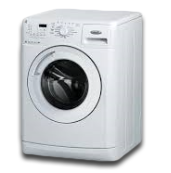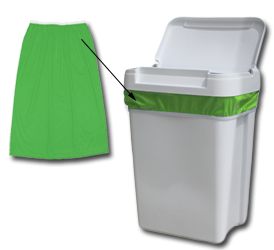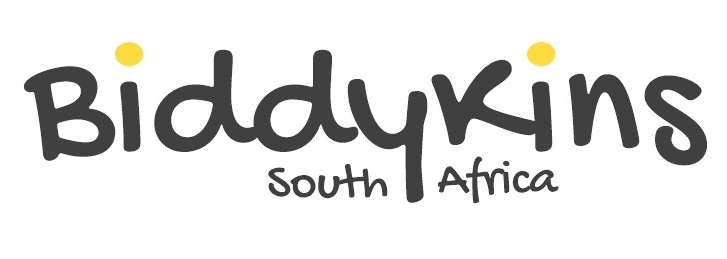Washing Cloth Nappies…
 All
cloth nappies should be washed at least once prior to first time use,
they do come straight out of a factory after all! Keep in mind that the
absorbency of Bamboo and especially hemp fabrics generally increases
after a few washes, in the case of hemp it can actually take up to 8
washes for the hemp to reach maximum absorbency.
All
cloth nappies should be washed at least once prior to first time use,
they do come straight out of a factory after all! Keep in mind that the
absorbency of Bamboo and especially hemp fabrics generally increases
after a few washes, in the case of hemp it can actually take up to 8
washes for the hemp to reach maximum absorbency.
Step 1
Remove and dispose of the bamboo liner if used - or rinse off fleece liner
Step 2
Remove inserts from pocket nappy (sleeve nappy will self-agitate in machine):
- If nappy is just wet - simply put nappy and inserts into a dry bucket.
- If nappy is soiled (solids) - flush the solids down the toilet, then place nappy and inserts into dry bucket. Note: The nappies must be stored in dry bucket, not soaked in water – this may damage the waterproofing layer and/or the elastic bands.
 TIP:
A BiddyKins Pail Liner may be used inside the dry bucket - essentially a
pail liner is a large PUL lined (ie waterproof) clothing bag. The items
are emptied into the machine on wash day and then the pail liner is
dropped in to the washing machine too. Two pail liners are usually
enough.
TIP:
A BiddyKins Pail Liner may be used inside the dry bucket - essentially a
pail liner is a large PUL lined (ie waterproof) clothing bag. The items
are emptied into the machine on wash day and then the pail liner is
dropped in to the washing machine too. Two pail liners are usually
enough.
Step 3
Washing day! Move nappies & inserts from dry bucket into your washing machine. (We always recommend first running a cold rinse cycle followed by a spin cycle to flush the nappies of urine – as a water saving tip: consider rinsing the nappies in bath water before draining the bath!).
Step 4
Add your detergent - use the recommended amount as per the manufacturer. You can use your regular detergent, just avoid using detergent with added softeners - so no 2-in-1's ! And don't add softener. Run a long cold wash cycle with the detergent. Some information available online notes that you can safely wash cloth nappies in hot water of up to 60 degrees – but heat will damage the waterproof lining and the potentially the elastics - also the sides of the machine drum may be a lot hotter than the water – so rather be safe and just do a cold wash as part of your regular routine. The care label on BiddyKins nappies specifically identifies 35 degrees. This is not because the nappies have inferior PUL or more sensitive elastics - we want your nappies to last as long as reasonably possible!
Remember: Stay-at-home mommy bloggers may have some first hand experience and a lot of opinions ....but they do NOT know more about the materials used than the fabric manufacturers, and neither will they take any responsibility for replacing or repairing your nappies should something go wrong..... so FOLLOW THE NAPPY CARE LABEL ! When in doubt - ask US !
Step 5
Dry your nappies and inserts.
The nappy shell will dry quite quickly as it doesn't really absorb much water. The inserts will take longer to dry as they are designed to act like a sponge. Inserts can be dried in a tumble dryer but as is the case with most fabrics - tumble drying shortens the lifespan of clothing. Interestingly Bamboo fabrics are more sensitive to tumble drying than microfiber & hemp in the long run. The nappy shell / outer lining (with the sensitive outer waterproof layer and elastics) should NEVER be tumble dried - in the case of pockets and all-in-two's and covers - the shell is not absorbent and will dry very quickly anyway - unlike the inserts.
We want to re-iterate this point: As far as we're concerned - it is immaterial that BFF Susie tumble dries her nappies every day and after 6 months she believes that they're still as good as new. FOLLOW THE NAPPY CARE LABEL ! BiddyKins care labels have the following letters on them in a very specific order: Do not tumble dry. We strongly advise that this is followed regardless of nappy brand.
